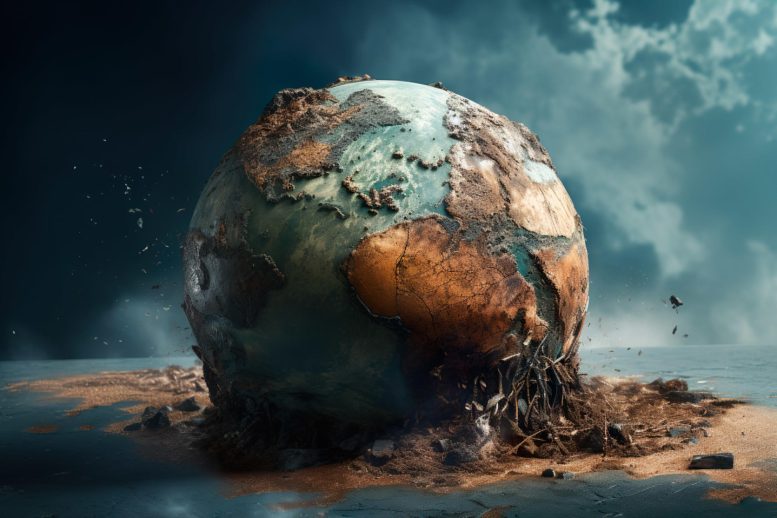
Human actions have precipitated a significant acceleration in the extinction of vertebrate animal species, causing not only species but entire genera to vanish, dramatically affecting the planet’s biodiversity. This rapid loss, dubbed “biological annihilation” by scientists, has severe repercussions for human life, ecosystems, and potential medical insights, urging an urgent and large-scale response.
The passenger pigeon, the Tasmanian tiger, and the Baiji (Yangtze river dolphin) are among the most recognized casualties of what many experts refer to as the sixth mass extinction. This is a consequence of human activities leading to the vanishing of vertebrate animal species at rates hundreds of times faster than their natural pace of extinction.
However, a new study conducted by Stanford University and the National Autonomous University of Mexico, recently published in the Proceedings of the National Academy of Sciences, indicates that the crisis may run even deeper. Each of the three species above was also the last member of its genus, the higher category into which taxonomists sort species. And they aren’t alone.
Up to now, public and scientific interest has focused on extinctions of species. But in their new study, Gerardo Ceballos, senior researcher at the Institute of Ecology at the National Autonomous University of Mexico, and Paul Ehrlich, Bing Professor of Population Studies, Emeritus, in the Stanford School of Humanities and Sciences, have found that entire genera (the plural of “genus”) are vanishing as well, in what they call a “mutilation of the tree of life.”
“In the long term, we’re putting a big dent in the evolution of life on the planet,” Ceballos said. “But also, in this century, what we’re doing to the tree of life will cause a lot of suffering for humanity.”
“What we’re losing are our only known living companions in the entire universe,” said Ehrlich, who is also a senior fellow, emeritus, by courtesy, at the Stanford Woods Institute for the Environment.
A ‘biological annihilation’
Information on species’ conservation statuses from the International Union for the Conservation of Nature, Birdlife International, and other databases has improved in recent years, which allowed Ceballos and Ehrlich to assess extinction at the genus level. Drawing from those sources, the duo examined 5,400 genera of land-dwelling vertebrate animals, encompassing 34,600 species.
Seventy-three genera of land-dwelling vertebrates, Ceballos and Ehrlich found, have gone extinct since 1500 AD. Birds suffered the heaviest losses with 44 genus extinctions, followed in order by mammals, amphibians, and reptiles.
Based on the historic genus extinction rate among mammals – estimated for the authors by Anthony Barnosky, professor emeritus of integrative biology at UC Berkeley – the current rate of vertebrate genus extinction exceeds that of the last million years by 35 times. This means that, without human influence, Earth would likely have lost only two genera during that time. In five centuries, human actions have triggered a surge of genus extinctions that would otherwise have taken 18,000 years to accumulate – what the paper calls a “biological annihilation.”
“As scientists, we have to be careful not to be alarmist,” Ceballos acknowledged – but the gravity of the findings in this case, he explained, called for more powerful language than usual. “We would be unethical not to explain the magnitude of the problem, since we and other scientists are alarmed.”
Next-level loss, next-level consequences
On many levels, genus extinctions hit harder than species extinctions.
When a species dies out, Ceballos explained, other species in its genus can often fill at least part of its role in the ecosystem. And because those species carry much of their extinct cousin’s genetic material, they also retain much of its evolutionary potential. Pictured in terms of the tree of life, if a single “twig” (a species) falls off, nearby twigs can branch out relatively quickly, filling the gap much as the original twig would have. In this case, the diversity of species on the planet remains more or less stable.
But when entire “branches” (genera) fall off, it leaves a huge hole in the canopy – a loss of biodiversity that can take tens of millions of years to “regrow” through the evolutionary process of speciation. Humanity cannot wait that long for its life-support systems to recover, Ceballos said, given how much the stability of our civilization hinges on the services Earth’s biodiversity provides.
Take the increasing prevalence of Lyme disease: white-footed mice, the primary carriers of the disease, used to compete with passenger pigeons for foods, like acorns. With the pigeons gone and predators like wolves and cougars on the decline, mouse populations have boomed – and with them, human cases of Lyme disease.
This example involves the disappearance of just one genus. A mass extinction of genera could mean a proportional explosion of disasters for humanity.
It also means a loss of knowledge. Ceballos and Ehrlich point to the gastric brooding frog, also the final member of an extinct genus. Females would swallow their own fertilized eggs and raise tadpoles in their stomachs, while “turning off” their stomach acid. These frogs might have provided a model for studying human diseases like acid reflux, which can raise the risk of esophageal cancer – but now they’re gone.
Loss of genera could also exacerbate the worsening climate crisis. “Climate disruption is accelerating extinction, and extinction is interacting with the climate, because the nature of the plants, animals, and microbes on the planet is one of the big determinants of what kind of climate we have,” Ehrlich pointed out.
A crucial, and still absent, response
To prevent further extinctions and resulting societal crises, Ceballos and Ehrlich are calling for immediate political, economic, and social action on unprecedented scales.
Increased conservation efforts should prioritize the tropics, they noted, since tropical regions have the highest concentration of both genus extinctions and genera with only one remaining species. The pair also called for increased public awareness of the extinction crisis, especially given how deeply it intersects with the more-publicized climate crisis.
“The size and growth of the human population, the increasing scale of its consumption, and the fact that the consumption is very inequitable are all major parts of the problem,” the authors said.
“The idea that you can continue those things and save biodiversity is insane,” Ehrlich added. “It’s like sitting on a limb and sawing it off at the same time.”
Reference: “Mutilation of the tree of life via mass extinction of animal genera” by Gerardo Ceballos and Paul R. Ehrlich, 18 September 2023, Proceedings of the National Academy of Sciences.
DOI: 10.1073/pnas.2306987120


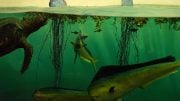

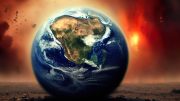
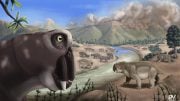
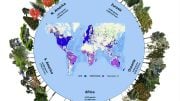


Stanford Scientists seem to forget that ” Species go extinct all the time. Scientists estimate that at least 99.9 percent of all species of plants and animals that ever lived are now extinct.” (see https://www.amnh.org/exhibitions/dinosaurs-ancient-fossils/extinction/mass-extinction ).
This is true. The problem with the current man-caused event is that billions of humans will die as a result & we might go extinct ourselves.
Have you factored in how criminal socioecopath corp leaders & politicians have responded to the IPCC climate change, and species extinction warnings. The EU parliament is debating adding criminal prosecution for the extensive negligent long term damage to the env, to our life support systems (LSS) acts of ecocide to the EU criminal code Ref Stop Ecocide International
Petroleum Papers documents oil corp were warned climate change threatens our future. They then lied to humanity, investors and politicians. Spend millions obstructing and sabotaging legislation
KochLand by Christopher Leonard document the same criminals
Magnetic poleshift affects all species of wildlife. Political story
“When a species dies out, Ceballos explained, other species in its genus can often fill at least part of its role in the ecosystem.”
What this statement ignores is what is called “convergent evolution,” where very different branches of the tree of life can evolve to fill or compete in an ecological niche. While probably most common during different geological time, it can occur during the same time. Examples today would be fruit-eating bats (mammals) and birds (descendants of dinosaurs); insectivorous bats and birds; and marsupial omnivores (Virginia Opossum) and mammalian skunks and raccoons.
Blah, blah, blah…humans bad… blah, blah, blah
Toxins bad blah blah blah.
When did you give up on critcal thinking?
How come mass extinctions happen all the time but now we’re blaming it on humans? If you want to blame yourself then quit using air-conditioning like me and live on solar panels. Otherwise quit complaining.
Paul Ehrlich… He predicted exhaustion of strategic metals by the late 1980’s back when I took population ecology in 1969. What a joke! His type should be extinct by now, not screaming CHICKEN LITTLE SKY IS Falling bs
If humans can’t even stop littering, how in this world are we going to prevent ANY extinctions,climate change, pollution, environmental disasters, etc??? Hopeless!!!
I agree! I would like to add that littering is negatively affecting our environment. It is increasing levels of air and water pollution, which can have effects on a species health such as us, humans. 🙁
Life is what it is… Until it isn’t.
My air conditioning is evaporative from solar panels !
Have mases of vegetation/& trees to offset any CO2 from winter fireplace use !
Let’s think about this. A human who stops breathing can be kept alive with another human’s exhaled breath, containing 4% Carbon Dioxide (CO2) instead of the normal 0.04% in the atmosphere and 16% Oxygen instead of atmospheric 20%.
of course we will not be able to run a marathon on the 4% CO2, but the point is that the world is screaming because the CO2 may have increased from 0.03% to 0.04% over the last 50 years…? I’m not so sure about that. As long as I can remember (I’m 71), atmospheric CO2 gas been given as 0.04%
From this I deduce that the world’s plant life will benefit enormously from a CO2 of 0.1% and humans and other animals would easily adapt to that. So these carbon emissions panic attacks are just a load of cr@p by elite “scientists” who want to increase their status, relying on the ignorance of others.
Are you acting with willful blindness to the IPCC climate change warnings.
The book the Petroleum Papers document the oil corp being warned by their own scientists that climate change threatens our future. They then lied to humanity, investors and politicians. Not all were fooled.
EU parliament debating adding the criminal prosecution of env atrocities acts of ecocide. Ref Stop Ecocide International
I love most of the comments that were left on this study above; because it obviously unveils a blatant genetic flaw not just in humans, but all primates, that we just can’t can’t seem to stop killing things, including ourselves; and, no matter what anyone says, who some how are able to overcome this genetic flaw of not being able to confront our own imperfections, attempt to educate others, and in return, face alienation, because of this genetic flaw that has so much power over this species’ mind that it can only respond by self-defense, hatred and murder and mass murder in the form of wars etcetera, an obvious junk genera that should have gone extinct long ago; but since we are here, despite our best efforts not to be; you notice how the worse of us, the ones that kill and starts wars, always tend to become the equivalent of queen bees; followed by colony collapse? A genetic weakness that makes some individuals susceptible to fungal infections? Cats carry such a pathogen and much of the human species is infected with it, and it does alter their behaviors, in men, those behaviors tend to lead to events that thanks to our technological skills will definitely lead to our own extinction; witness the above mentioned comments, all of whom are probably infected with this very curable disease; but, obviously, since they are infected, the pathogen has evolved to incapacitate its victims from seeking help. Just an observation, that this species is on a one-way street to oblivion.
I totally agree. I noticed that most of the comments made by people infected with this curable disease are people with higher levels of testosterone than estrogen. I wonder, might that interact with this pathogen to render them blind as well? We might need to wait for natural selection to run its course and hope it’s not too late for the rest of us who want to preserve this blue marble and marvel in our solar system.
“What economic class of people primarily occupy the tropical regions of the Earth? How might conservation efforts in these areas of the world directly affect them in the short term and the long term?”
—> The economic class of people that are primarily occupying the tropical regions of the Earth could possibly be communities that have a mixture of farmers or/and native people that have a low-income. This is could be the case as people in these areas often have a to face poverty and limit in resources. Conversation efforts in these areas in the world might directly affect them in the short term and long term by having or getting positive and negative outcomes. In the short term, harsh conversations may limit resources which could impact those who rely on activities related to natural environments. In the long term, ecosystems can be maintained by being protected. Both terms could positively and negatively the environment and people in those areas
The book the Petroleum Papers document the oil corp being warned by their own scientists that climate change threatens our future. They then lied to humanity, investors and politicians. Not all were fooled.
EU parliament debating adding the criminal prosecution of env atrocities acts of ecocide. Ref Stop Ecocide International
Another scientist is screaming from the top of the hill that the sky is falling when, after all the Fiasco with Corvid and hearing from scientists, they’ve all been wrong. I have a hard time believing this guy.
Thank You
Species go extinct all the time. That why Darwin wrote his book. It is also why we have a society full of lanterns. People that are dimly lit and need to be carried. Gore keeps saying that the polar bears are going extinct, it’s crap. There were 5000 polar bears the year he was born. There are now 20,000 and they are evolving to mate with grizzlies.